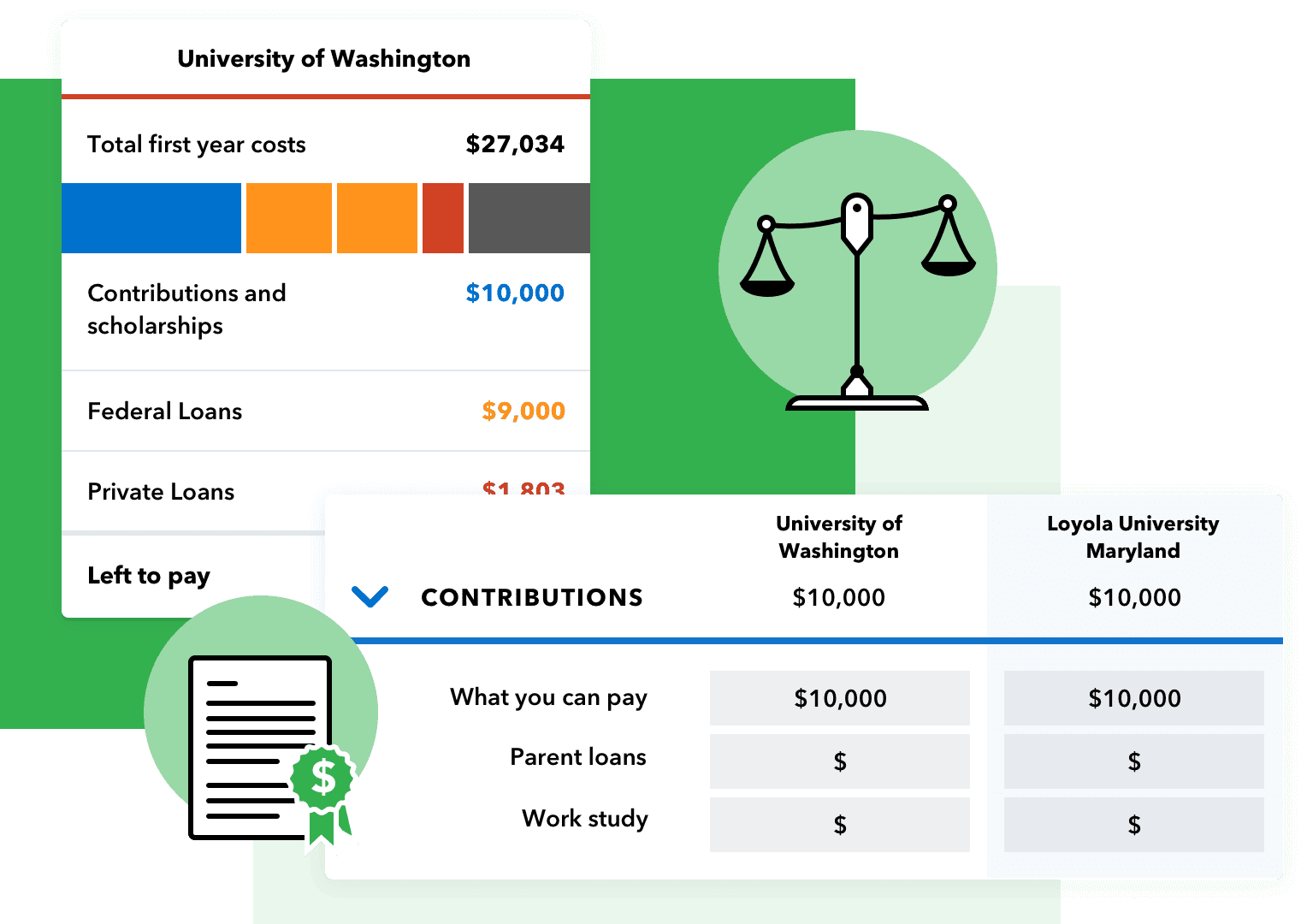CFPB – College Cost Comparison Tool
- Published on
Paying for College is tool to help 21 million prospective college students and their families decipher how much a college degree actually costs. The cost comparison worksheet computes the actual cost of the chosen schools by comparing tuition, books, and other expenses, and estimates post-school debt and overall debt burden. I worked on this project with a UX researcher, a front-end developer, and a product manager. The prototype I created was used to convince the Department of Education to work with the Consumer Financial Protection Bureau to gather key data, launching this project well before schedule.
Problem
Student debt can be a confusing arena where it's often difficult to understand how to compare the financial benefits of getting a college degree. Getting a college degree is often a part of the American dream, but students and parents taking on this debt often fail to realize the debt burden after school. This tool aims to help 21 million prospective college students and their high school counselors.
Process
Research: User testing and workflows
UX design: Collaboration and constraints
Visual design and prototyping: Code-first design process
Paying for College is tool to help prospective college students and their families decipher how much a college degree actually costs. The cost comparison worksheet computes the actual cost of the chosen schools by comparing tuition, books, and other expenses, and estimates post-school debt and overall debt burden.
As a part of the product team at the Consumer Financial Protection Bureau, CFPB, I prototyped my designs in code and worked with other UX designers in sprint cycles to release Paying for College, a set of tools catered towards the education life milestone. Awards
Winner of a Best of the Web & Digital Government Achievement Award for 2013 Runner-up for the 2013 Core77 Design Award in Research and Strategy Finalist for the 2013 IDEA Award in Design Strategy
Research
User testing and workflows
Our users for this tool included 21 million students enrolling in college every year and their guidance counselors. Our team of consisting of a product manager, developer, UX designer, and myself also worked with the CFPB “Students Team” delving into student debt data and the Department of Education.
Brittany Mederos and I collaborated on how to build this tool, whiteboarding out different scenarios that we’d both elaborate on and test. We ran into issues of how users were going to input data (if at all), how we would integrate two-year and four-year programs, and how to easily compare costs of different programs. This stemmed from working inter-agency with the Department of Education.
UX design
Collaboration and constraints
Our users for this tool included 21 million students enrolling in college every year and their guidance counselors. Our team of consisting of a product manager, developer, UX designer, and myself also worked with the CFPB “Students Team” delving into student debt data and the Department of Education.
Brittany Mederos and I collaborated on how to build this tool, whiteboarding out different scenarios that we’d both elaborate on and test. We ran into issues of how users were going to input data (if at all), how we would integrate two-year and four-year programs, and how to easily compare costs of different programs. This stemmed from working inter-agency with the Department of Education.
Visual design and prototyping
Code-first design process
Our users for this tool included 21 million students enrolling in college every year and their guidance counselors. Our team of consisting of a product manager, developer, UX designer, and myself also worked with the CFPB “Students Team” delving into student debt data and the Department of Education.
